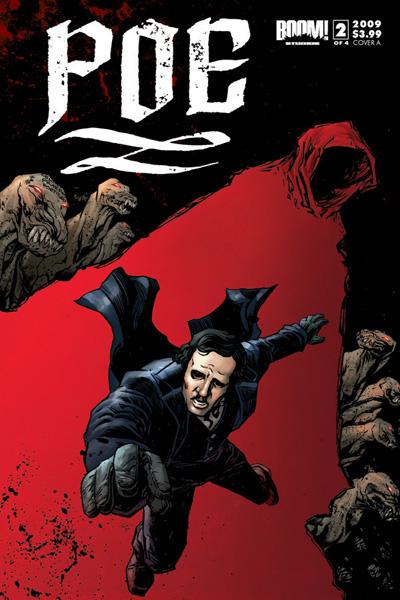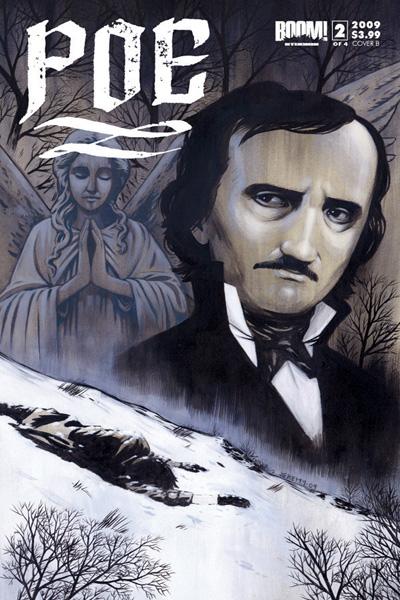- Comics
- Comics Reviews
- Manga
- Comics Reviews
- European Comics
- News
- Comics News
- Press Releases
- Columns
- Spotlight
- Digital Comics
- Webcomics
- Cult Favorite
- Back Issues
- Webcomics
- Movies
- Toys
- Store
- More
- About
By Andy Frisk
August 20, 2009 - 23:59
Edgar Allen Poe, after surviving an attack by a Golem on his brother and himself, comes face to face with the mastermind criminal behind the macabre events of last issue. He’s the son of a demented doctor. His name is Roderick Usher. It appears that Roderick is attempting to assemble as many of the surviving original thirty pieces of silver that Judas received as payment for betraying Jesus Christ. The pieces of silver have power over death, but for a price…and as those of you who read Poe’s short story The Fall of The House of Usher know, Roderick has an unhealthy relationship with his sister.

The gothic world of 19th Century Baltimore continues to serve as the backdrop for this fictional imagining of a series of events in the life of American writer, Edgar Allen Poe. It seems that Poe’s stories themselves aren’t enough to inspire another dark and gloomy comic book, and Poe himself has to take the stage. Interestingly though, Mitchell, proving he has done his research, and has read Poe’s most renown works, at least, uses elements from The Fall of The House of Usher, and at least one visible reference from “The Raven.” Mitchell’s use of meta-fiction (fiction about fiction) is reminiscent of Marc Norman and Tom Stoppard’s Shakespeare in Love which portrayed the possible real life events that inspired Shakespeare’s work. The portrayed possible real life events of Poe are meant to be a possible inspiration on Poe’s work. Obviously though, where Shakespeare in Love was meant as a dramedy set in the real world, Poe is just as obviously a gothic romance (in the literary sense of the word) set in a world where ghosts and goblins are real (and therefore, to most of us, a fantasy world). Nevertheless, the spirit (pardon the pun) of Poe is earnest, and all the authors are attempting to create quality fiction about classic fiction writers (some with more degrees of success than the other artistically). Mitchell displays enough knowledge of Poe’s works to play with the themes and ideas behind them, and he does an excellent job creating a horror story of his own.

Kotz’s artwork continues to recreate the gas lit streets and interiors of 19th Century Baltimore well. We even catch a glimpse of 19th Century seafaring when Poe and his brother board a Naval Battleship in search of another of the coins. Period dress and the requisite spooky gothic bad guy are also well drawn. It is the heavy coloring though again this issue that creates the necessary gloom for a tale such as this. It truly is one of the darkest colored comic books in recent memory, and the darkness fits the atmosphere of its events.
Overall, Poe will continue to appeal to, and be a bit of escapist fun for, previous English majors like myself who get a kick out of seeing some of the literary greats they studied, and still admire, brought to fanciful life.
Rating: 7 /10